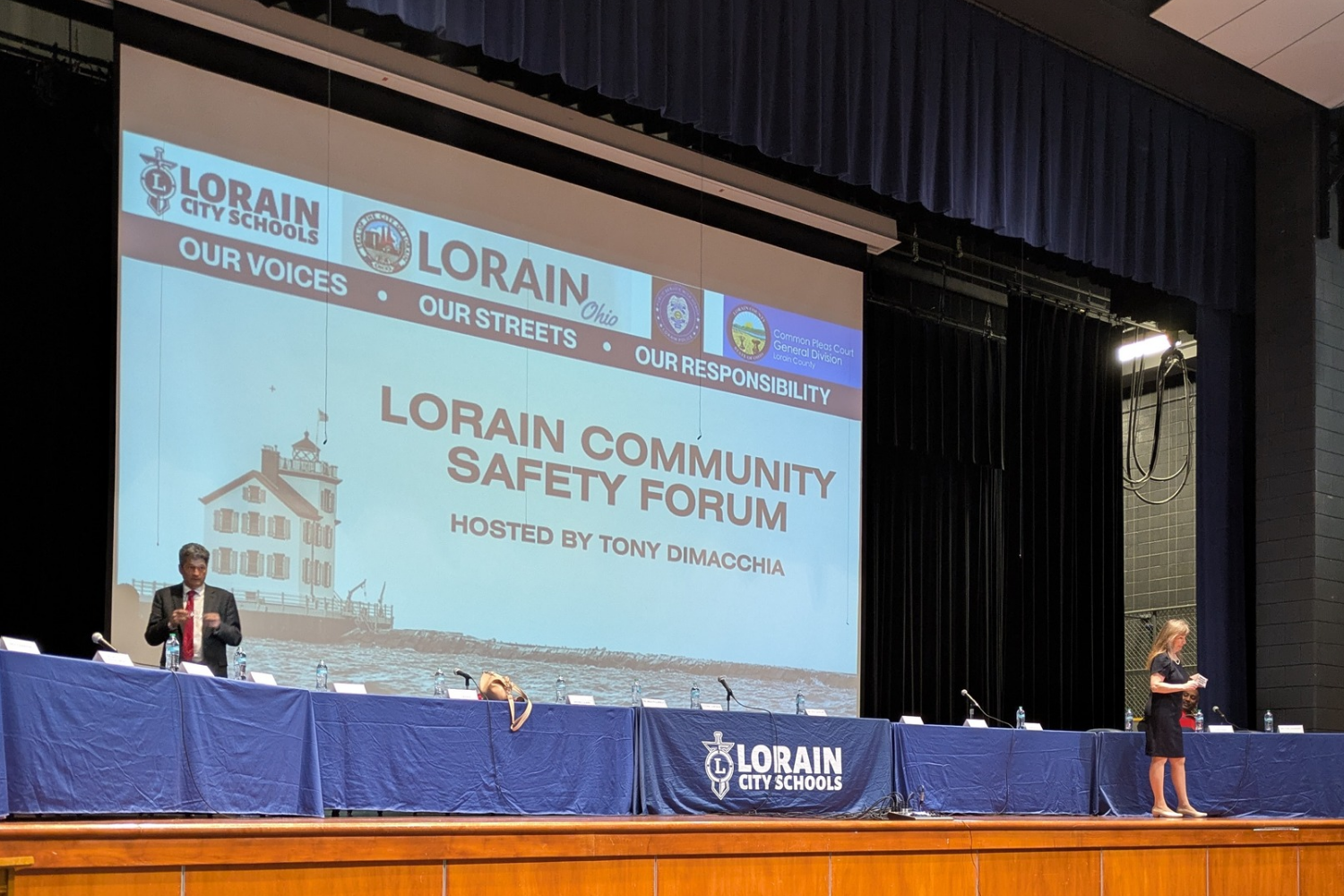Community comnentary
The Lorain Community Safety Forum, hosted by Councilman Tony Dimacchia at Lorain High School, was many things—emotional, tense, hopeful, frustrating—but above all, it was a clear message: if we want safer streets, we are going to need to be the change. Especially since we can’t get all stakeholders to the same table.
The crowd gathered at Lorain High School Auditorium in response to a series of violent, high-profile murders that have shaken Lorain. Residents showed up looking for answers, guidance, and perhaps some comfort. But the city’s mayor, Jack Bradley, and his administration did not attend. Councilman Dimacchia later confirmed the police and city officials were told not to come. The reason many of gave online on social media? The mayor allegedly viewed the event as “political.”
That choice set the tone. While judges, school officials, and even the Lorain County Sheriff showed up and spoke earnestly about what’s happening in their courtrooms and classrooms, the people who are supposed to shape the policies that prevent crime were absent. And it showed.
What followed was a raw and sometimes chaotic town hall. Community members asked tough questions. Some cried. Some shouted. Many simply wanted someone—anyone—to care. Judges shared how heavy the burden of sentencing weighs on them. Prosecutors talked about the limits of what laws can do after a crime occurs. And Sheriff Jack Hall made an observation that stuck with me: in a place like Avon Lake, this kind of violence would have filled every seat. In Lorain, there were empty rows.
But let’s be honest: it’s not just Lorain. I live in Vermilion. Our water bills have skyrocketed. Our roads are crumbling. And still, people elect the same leaders and expect different results. When the day-to-day issues don’t spark outrage, they pile up—and eventually, they boil over.
So no, the cavalry isn’t coming. And maybe that’s okay—because we have each other. We need each other if things are ever going to change. No one person can do it alone.

What I saw in that room were people trying. Trying to understand. Trying to help. Trying to figure out what to do next. And that’s where it starts. Street by street. Neighbor to neighbor. Family to family. We have to stop waiting for someone else to fix this. We have to lock arms and do it ourselves.
That doesn’t mean we don’t hold our officials accountable or hit the streets for retribution or vigilante justice. It means we hold ourselves accountable—as parents, as friends, as neighbors, as citizens. Ask your neighbor how their kid is doing. Offer to help your elderly neighbor. Keep an eye on things. Speak up—not with judgment, but with care.
Yes, the system has flaws. Yes, leadership matters. But nothing changes until we do. No law, no mayor, no judge can replace what it means to simply give a damn.
If you’re reading this, I’m asking you to care. Pick one issue. One block. One neighbor. One thing that needs someone to care. Commit to caring. Act consistently to make a difference.
They say the best time to plant a tree was five years ago. The second-best time is now. Maybe we can’t undo everything that’s been allowed to grow wild in our streets and systems—but we can start planting better things today. Seeds of accountability. Seeds of community. Seeds of care. If we want safer neighborhoods five years from now, we need to start doing the hard work now—together, block by block, conversation by conversation, choice by choice. No one’s coming to save us. The solution was always within ourselves, collectively.
There is no rescue plan. The fix has always lived in us—in what we’re willing to do, and who we’re willing to become, together.
You can watch the forum here.

